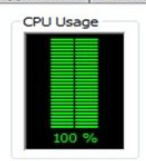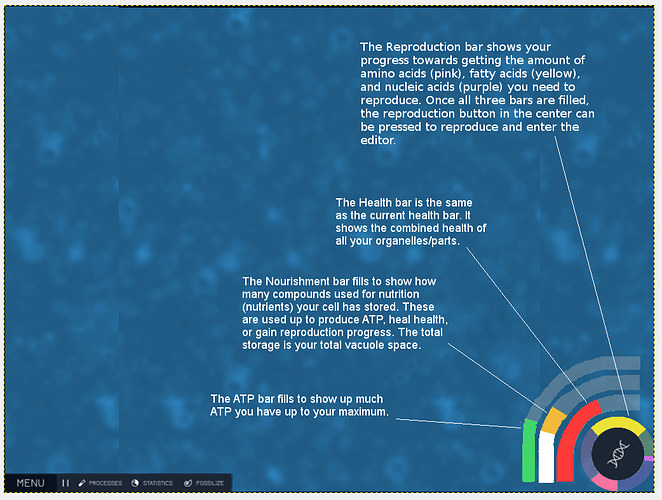It wouldn’t be a compound but it would be a metric on your cell, I’ve been thinking about it recently because moopli was the one who had the solid concept for it but at the bottom of my reply I’ll put my idea on it.
That is a good topic for a thread. It’d ideally have to be based on some priority system of how much demand your cell has for the different compounds, with energy nutrients being higher priority than growth nutrients.
That’s an interesting idea but my ideas on it are a little irrelevant if we do adopt an ATP system like I’ll describe below, so I’ll explain that first and then we can see what we think.
Here’s an idea of how we could make ATP be just a balance and not a stored compound. Let me know what you think.
So currently ATP is a compound that is collected and stored just like the others. However realistically ATP is only created when needed and used up right away, and cannot be stored. ATP would be better represented as a balance than a collectible compound. For example, your cell will at rest use up a certain amount of ATP every second. This represents the basic energy needed to maintain the basic functions of staying alive, most important of which is maintaining the internal pressure of your membrane so you don’t explode. Certain organelles will also use up a certain amount of ATP every second as well. Some organelles, like flagella, will only use ATP when being used and otherwise will not use any.
On the other hand, your cell also produces a certain amount of ATP every second, using up your energy nutrients in the process. Cytoplasm performs fermentation (which I realize I have been incorrectly referring to as glycolysis all this time), which produces a small amount of ATP per second. Mitochondria perform aerobic respiration and produce a large amount of ATP per second.
Your cell can only use as much ATP per second as they are capable of producing. A good example of this is like a CPU, which can perform only a certain amount processing per second. It’ll rest usually at a low value such as 10% per second, but if you try to run many processes at once it will use up more and more until it caps at 100%.
Here’s an example with arbitrary numbers. Your cell has the following organelles which use the following amount of ATP:
- Nucleic Core (Nulceus, ER, Golgi) -10 ATP/s
- Lysosomes -15 ATP/s
- Flagellum (I will explain this one later) Uses 5 ATP/s when active
- Agent Secretor (I will explain this one later) Uses 5 ATP/s when active
And the cell has the following organelles/parts producing the following amount of ATP
- Mitochondrion +32 ATP/s
- Cytoplasm (1 hex) +2 ATP/s
So overall the cell produces 34 ATP and consumes 25 as its base rate, which is allowed (a cell designed in the editor with a negative balance cannot be saved/used). This leaves a remaining balance of 9 ATP. This means that the cell can use it’s flagellum to move, or secrete agents, but not both at the same time. This is since the cell cannot make that much ATP/s and the two of those would be -10, one more than the remaining balance of +9.
Here is an example of how we could display this to the player.
![]()
The right end of the bar would represent the total amount of ATP/s the cell is capable of producing. The filled area of the bar shows how much ATP/s the cell is currently using (just like CPU usage shown on a computer).

The bar would sit at a certain level when your cell is at rest (showing the base rate of ATP use) and increase as you do things like move or secrete agents. One way of thinking about what the bar is showing you is that its displaying how fast you are currently using up your energy nutrients (which could be glucose or iron or whatever).
This bar would then be shown somewhere on the HUD, as it is now. For example, in the UI draft I posted the other day…
…the green ATP bar would show what I explained above, with the filled portion showing the current ATP/s usage (ignore the text description of the ATP bar on the image).

